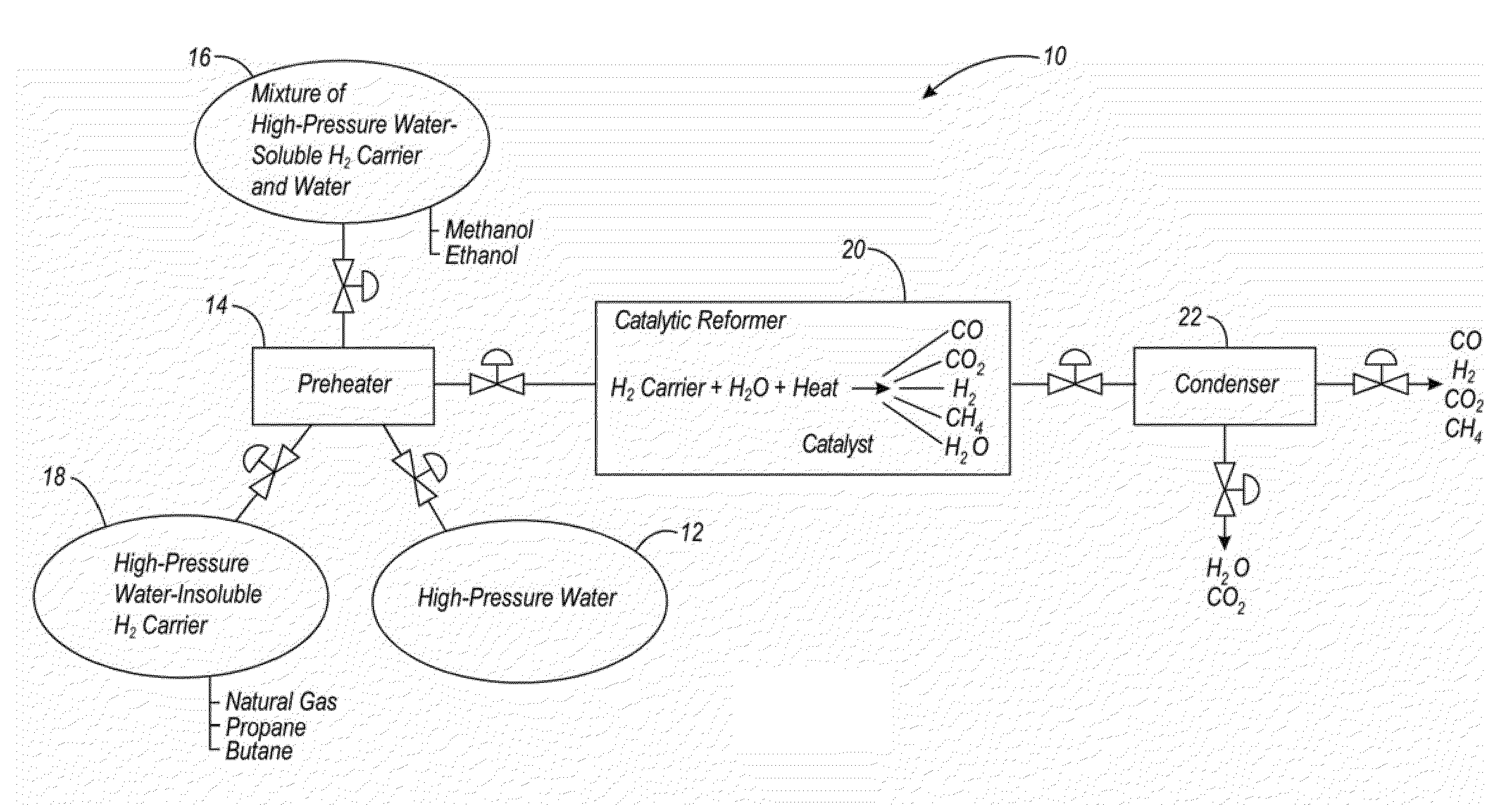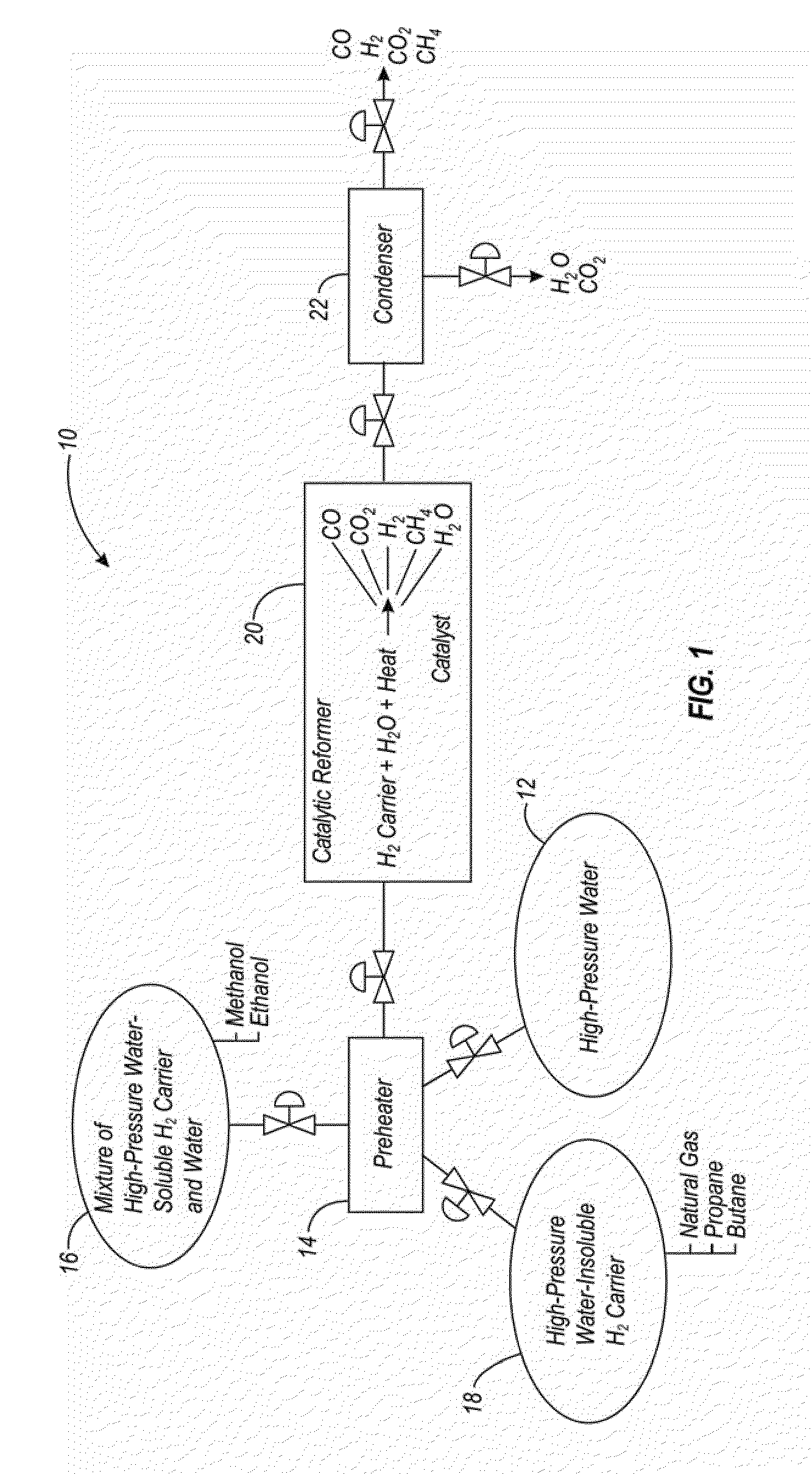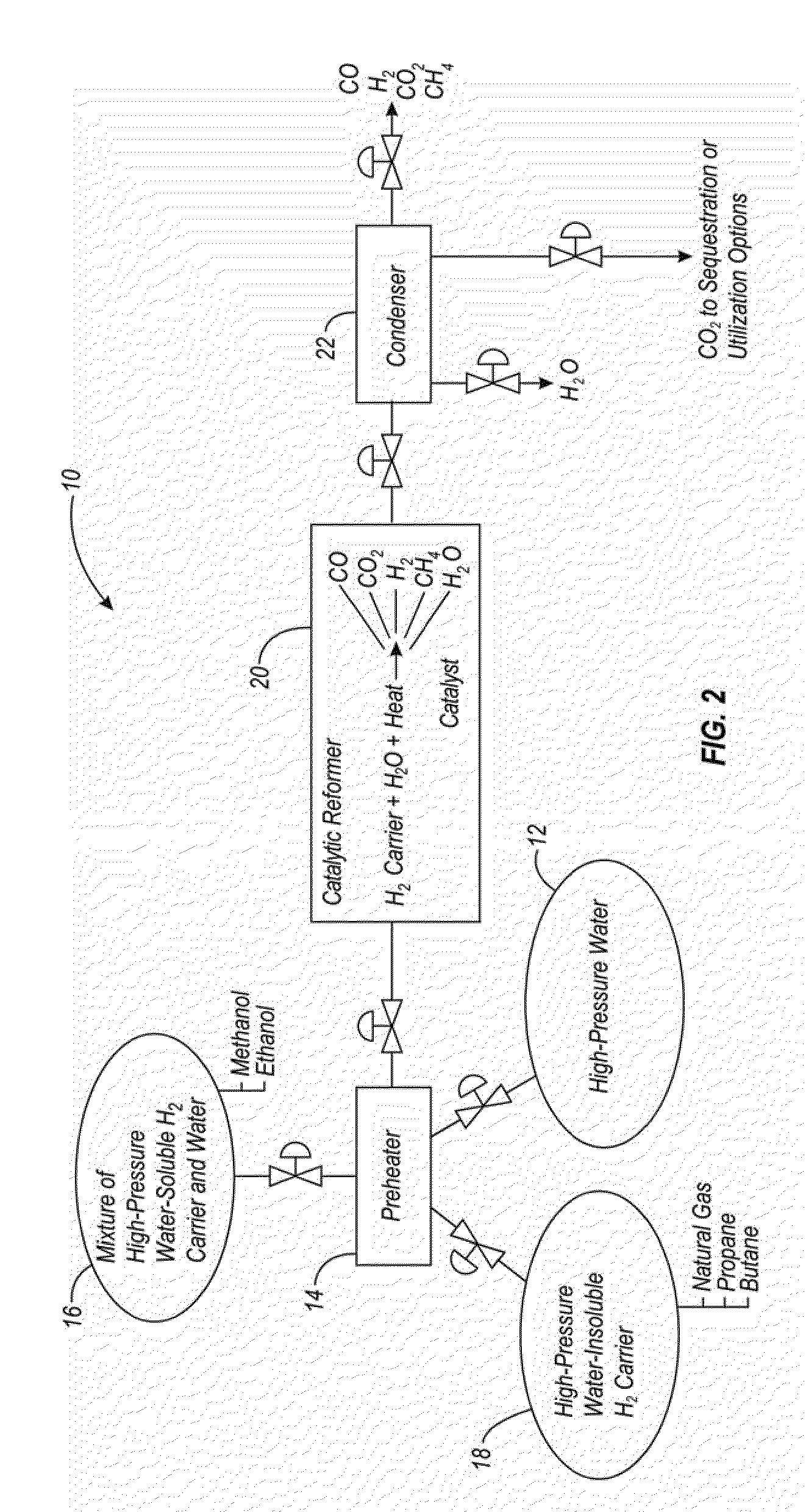System and process for producing high-pressure hydrogen
a hydrogen production system and high-pressure technology, applied in the field of high-pressure hydrogen production, can solve the problems of inability to supply fuel cell-quality hydrogen economically viable, difficulty in hydrogen production and cost, and inability to meet the needs of hydrogen storage and transportation,
- Summary
- Abstract
- Description
- Claims
- Application Information
AI Technical Summary
Benefits of technology
Problems solved by technology
Method used
Image
Examples
Embodiment Construction
[0020]Generally, the present invention offers an apparatus and method of economically producing high-pressure hydrogen, thereby eliminating the need for expensive hydrogen compression. In addition, the present invention can be used for on-demand production of high-pressure hydrogen, which results in greatly diminished hydrogen storage volume requirements compared to other systems, such as SMR and other demand-unresponsive processes. The present invention can produce high-pressure hydrogen from natural gas, methanol, ethanol, and other fossil fuel-derived and renewable hydrocarbon resources, including oxygen- and nitrogen-containing hydrocarbons. The process can produce hydrogen at pressures ranging from 2000 to 12,000 pounds per square inch (psi) using a hydrogen carrier, with or without water, and a catalyst under high-pressure, moderate-temperature reaction conditions. Note that this pressure range is only one example and that higher pressures could also be used. In one example, w...
PUM
 Login to View More
Login to View More Abstract
Description
Claims
Application Information
 Login to View More
Login to View More - R&D
- Intellectual Property
- Life Sciences
- Materials
- Tech Scout
- Unparalleled Data Quality
- Higher Quality Content
- 60% Fewer Hallucinations
Browse by: Latest US Patents, China's latest patents, Technical Efficacy Thesaurus, Application Domain, Technology Topic, Popular Technical Reports.
© 2025 PatSnap. All rights reserved.Legal|Privacy policy|Modern Slavery Act Transparency Statement|Sitemap|About US| Contact US: help@patsnap.com



